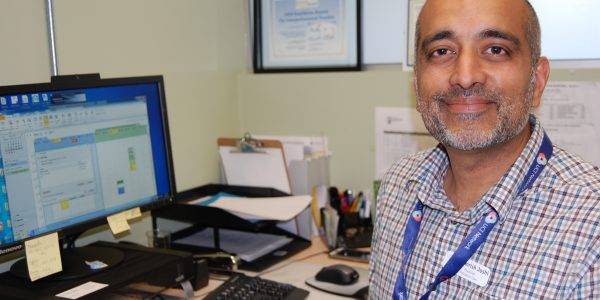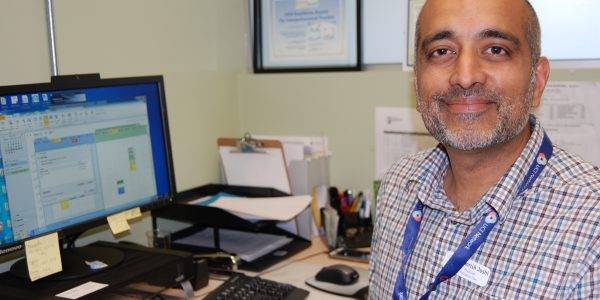While some might see them as a source for recreational cannabis, a recent study has shown that dispensaries in Vancouver and Victoria are important resources for patients and physicians looking to further their medical cannabis education.
As a palliative care physician in Metro Vancouver, Dr. Amrish Joshi knew his patients were using cannabis from local compassion clubs and dispensaries as a way to ease their pain. Some were up front about their use, but most kept quiet unless they were asked.
“It is entangled, this medicinal and recreational use, which then really affects how patients and doctors approach this subject in terms of caring for themselves,” Joshi told the Straight last month over the phone from his office in Richmond.
In his first study, Joshi, who completed a master’s degree in palliative medicine with a focus on cannabis at Cardiff University in 2016, found that the negative stigma associated with the recreational use of cannabis had a preventative effect on whether or not patients might broach the subject of cannabis with him.
Since so many of his patients seemed to be using dispensaries without seeking his opinion, Joshi was curious to know if shop operators saw themselves in a different way than they might be perceived by the media or local government.
To explore the attitudes and beliefs of the men and women operating dispensaries, Joshi developed a survey that would help him examine them from both a quantitative and qualitative perspective.
Working in conjunction with Vancouver Coastal Health, UBC, and Richmond Integrated Hospice Palliative Care, Joshi, patient advocate David Hutchinson, and Dr. Rachila Sharma Aucone visited more than 85 dispensaries in Metro Vancouver and Victoria. In the end, 26 cannabis-related businesses agreed to take part.
Subjects were given a survey of 20 questions asking about the age, gender, and length of time they had been in the industry, as well as how long they spent with each visiting patient.
The study found that 72 percent of operators spent at least 15 minutes or more with each client, and most perceived themselves as filling an educational role, with many viewing their dispensary as operating more like a medical clinic than a business.
Dr. Joshi and his co-authors also noted a significant relationship between the time operators spent with the patients, and their perceived educational role.
“What was surprising, or not I suppose, is that the more they saw themselves as an educator, they more time they spent with their clients,” said Joshi.
The amount of time owners had spent in the industry also correlated with how vendors perceived themselves as educators.
“It’s a smaller number, but there was a difference between those that had been in the industry for a shorter period. They spent a little bit less time [with clients] than those who’d been in the industry for a bit longer,” Joshi clarified, noting that different incentives might also play a role in this relationship.
Other data showed that the most common reasons clients used dispensaries were to treat pain, anxiety, insomnia, depression, cancer, and arthritis, in that order.
From a qualitative perspective, Joshi used survey feedback to create three theoretical constructs about the perception of dispensaries: First, he found them to be a resource for both patients and doctors, offering education and in some instances serving in the capacity of a counsellor. From a community perspective, he found that dispensaries acted as a service by offering alternative treatment options to conventional medicines.
“They felt that they were on the doorstep; that they were local, that it was easy for patients to come and see them. It’s a sense of community, it’s storefronts, and that was something that they were quite proud of,” Joshi said of his subjects.
He also found that despite their impact on present and future regulations, they still remain highly stigmatized.
Based on other research quoted in his work, Joshi says there is evidence to show that patients have a slightly higher satisfaction rating when they’re going to dispensaries.
As a patient advocate, Hutchinson says he couldn’t agree more. When his daughter, Beth, had cancer, Joshi was her palliative care doctor, and supported her choice to use cannabis. After she passed away in 2013, Hutchinson felt compelled to work with patients who had an interest in medical cannabis, but might not be sure where to start.
Working with patients, he advises them of which products might work best for their conditions, and where to find them.
In his experience, the individuals working in local dispensaries bridge the gap between patients, physicians, and advocates by educating their clients and empowering them to know their medicine.
“It’s called the grey market, but as far as I’m concerned, dispensaries have an essential role to play,” Hutchinson said.
“People want to go and sit down and talk with someone—they don’t want to be doing this over the internet or over the telephone.”





